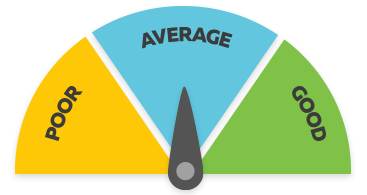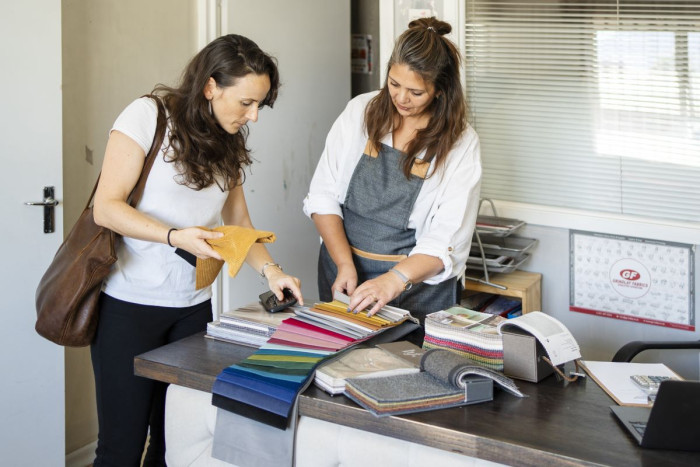Interior Designer
Kaitātai o-Roto
Alternative titles for this job
Interior designers plan, design, decorate and furnish spaces in residential, commercial, retail and leisure environments.
Pay
Interior designers usually earn
$52K-$87K per year
Interior designers can earn
$48K-$118K per year
Source: TEC research
Job opportunities
Pay
Pay for interior designers varies depending on experience and where they work.
- Interior designers usually earn between $52,000 and $87,000 a year.
- Interior designers can earn between $48,000 and $118,000.
Source: TEC research.
(This information is a guide only. Find out more about the sources of our pay information)
What you will do
Interior designers may do some or all of the following:
- discuss design ideas and provide advice to clients
- analyse clients' requirements
- plan and design building interiors, rooms, shops, and residential and leisure spaces
- plan interior infrastructure such as lighting, air-conditioning and communication cabling
- prepare drawings, samples and decorating instructions
- advise on hiring tradespeople
- design furniture or fittings
- buy and arrange furniture and fittings
- work with architects and other contractors.
Skills and knowledge
Interior designers need to have knowledge of:
- past and present styles of architecture, design and decorating
- interior materials such as paint, fabrics and glass
- building regulations
- how to analyse a client's requirements and create a design to fit
- design, drawing and presentation skills.
Working conditions
Interior designers:
- usually work regular business hours, but may need to work evenings and weekends to meet deadlines
- work in design studios and on-site at private, public and commercial properties.
What's the job really like?
Interior designer video
Laura Heynike talks about working as an interior designer – 2.20 mins
An interior designer really comes up with incredible solutions and designs but within that you could be a film designer, kitchen designer, a bathroom designer, a lighting designer. There's specific areas of interior design that you can hone in on, otherwise you can be a generalist like us.
So what I'm doing right now is pulling out a client floor-plan. This was all open plan and we've put in all these walls. So I really like this slat wall on our look sheet because it helps divide up a space so it's not one big open space. It also helps with reducing the noisiness in an office, because sometimes they can be super loud. So once we do that 2D floor-plan, we can then extrude it into a 3D model. Yeah, it is like playing The Sims. You can build whatever you like.
When you're selecting products, you first have to listen to your client and what styles they like. You have to guide them and encourage them that this is, you know, where you should go.
So we are here at a showroom today looking for a dining table and some chairs for a client. And then for another one, we've got an apartment design that we're doing. So we also need some cushions, rug, and a throw. These might work.
We do a lot of pre-research before we go to the showrooms to make sure what they've got on display is suitable for our client. Shopping and working on clients has to be as efficient as we can.
It's taken me 10 years to get to where I am today. I studied a Bachelor of Design, majoring in Spatial Design. After my degree, I was fortunate to get a graduate job at a interior studio that specialized in office furniture. I was there for 3 and a half years. And the natural thing would be to, you know, then go to another company. But I just decided I'd give it a go by myself.
If you wanna be an interior designer, my biggest advice would be just to have fun with it. Really explore how textures and colours and space works. Seeing if you can design your parents’ kitchen or have mock shopping trips, selecting cushions and throws. You'll have so much fun and you'll be addicted like me.
Entry requirements
You usually need experience to become an interior designer and a qualification may be useful.
You may need:
- experience in interior design
- a New Zealand Diploma in Interior Design (Residential) (Level 5)
- a New Zealand Diploma in Interior Design (Commercial) (Level 6)
- a relevant tertiary qualification in designed environments
- a bachelor's degree in architectural studies or design
- a Master of Interior Architecture
- a portfolio of work.
Secondary education
You usually need NCEA Level 3 or University Entrance to do the study or training for this job. Useful subjects include history of art, design and visual communication (graphics), maths, physics, and painting, sculpture, photography and printmaking combined.
Personal requirements
Interior designers need to be:
- imaginative and creative
- accurate, with an eye for detail
- good communicators
- persuasive and able to negotiate
- able to relate to a wide range of people
- able to inspire confidence in their clients
- able to accept criticism.
Useful experience
Useful experience for interior designers includes:
- any work related to rebuilding or refitting building interiors
- industrial design or other design work
- architecture or architectural draughting work.
Find out more about training
What are the chances of getting a job?
High competition for interior designer vacancies
Opportunities for interior designers are average as the occupation is small with limited job vacancies. There is high competition for vacancies when they arise.
According to the Census, 1,815 interior designers worked in New Zealand in 2018.
Opportunities best for qualified interior designers in cities
You chances of securing a job as an interior designer are best if you have a degree in design.
There are more job opportunities in commercial interior design. This type of work is mainly found in the larger cities of Auckland, Wellington and Christchurch.
Types of employers varied
Interior designers may work for:
- interior design or architecture practices
- construction consultancies
- design showrooms
- bathroom and kitchen design companies
- furniture or homeware stores or manufacturers
- companies that furnish homes for real estate sales
- polytechnics or universities as tutors and lecturers.
Opportunities for self-employed designers are limited.
Sources
- Hays, 'Jobs in Demand - Architecture July-December 2018', August 2018, (www.hays.net.nz).
- Ministry of Business,Innovation and Employment, 'Jobs Online Quarterly Report - June 2018', 30 July 2018, (www.mbie.govt.nz).
- Ministry of Business,Innovation and Employment, 'Occupation Outlook - Designers and Artists', accessed September 2018, (www.mbie.govt.nz).
- Stats NZ, '2018 Census Data', 2019.
- Veninga, C, CEO, The Designers Institute of New Zealand, careers.govt.nz interview, 5 September 2018.
(This information is a guide only. Find out more about the sources of our job opportunities information)
Progression and specialisations
Interior designers may progress to set up their own interior design business, or move into management roles.
Interior designers may specialise in:
- commercial or residential work
- colour consulting
- feng shui design
- kitchens
- lighting
- room styling
- home staging for real estate sales.
Last updated 13 December 2024


